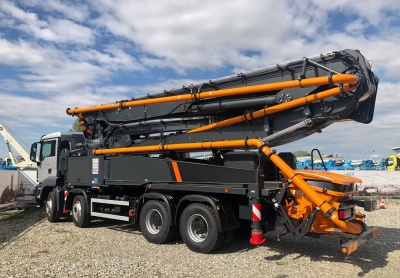A control rod is a critical component in heavy equipment, particularly in machinery that relies on nuclear reactions or hydraulic systems. Its primary function is to regulate power output by absorbing excess neutrons in nuclear reactors or by controlling fluid flow in hydraulic applications. Though its operation varies across different machines, the fundamental principle remains the same: precise control over the system’s energy or fluid dynamics. In many heavy equipment applications, the control rod is often operated using an industrial joystick, which allows operators to manipulate its position with ease and precision.

Key Features and Components
The control rod is typically made from materials with high neutron-absorbing properties, such as boron or cadmium, in nuclear applications. In hydraulic systems, it is often constructed from durable metals like steel, designed to withstand high pressures and temperatures. Key components include the rod body, actuators, and sensors that monitor its position. These components work in harmony to ensure smooth operation and accurate control. The actuators, which are often controlled by an industrial joystick, provide the necessary force to move the control rod to the desired position.
Proper Installation and Calibration
Before operating heavy equipment with a control rod, proper installation and calibration are essential. Begin by verifying that the rod is securely attached to the actuator mechanism. Ensure all connections are tight and free of debris. Calibration involves setting the rod’s initial position to match the equipment’s operational requirements. This step is often supported by digital readouts or manual adjustments, depending on the machine’s design.
Operation and Maintenance
During operation, the control rod must be monitored regularly to ensure it remains within specified parameters. Sudden deviations in its movement can indicate a malfunction, necessitating immediate inspection. The operator should use the industrial joystick to periodically check the rod’s position and make adjustments as needed. Routine maintenance includes cleaning the rod and checking for wear or corrosion. Replace any damaged parts promptly to avoid system failure.
Safety Precautions
Safety is paramount when working with heavy equipment and control rods. Operators should receive comprehensive training on handling and controlling the rod. Always adhere to safety protocols, such as wearing appropriate protective gear and ensuring the equipment is shut down before performing maintenance. In nuclear applications, additional precautions, such as radiation monitoring, are necessary to protect personnel and the environment.
Troubleshooting Common Issues
Even with proper care, issues may arise. Common problems include sticking or jerky movements, which can often be resolved by recalibrating the actuator or lubricating moving parts. If the rod fails to respond to commands, check the electrical connections and sensor feedback. For nuclear reactors, a loss of control rod function can be mitigated by switching to manual override systems until repairs are completed. In such cases, the operator may need to use the industrial joystick to manually control the rod’s position.
The control rod is indispensable in heavy equipment, providing reliable regulation of power or fluid flow. Understanding its features, proper installation, regular maintenance, and safety measures are crucial for optimal performance. By adhering to these guidelines and utilizing the industrial joystick effectively, operators can ensure the longevity and efficiency of their equipment, minimizing downtime and maximizing productivity.